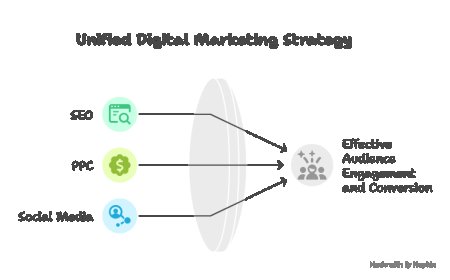What Experienced Traders Look for in Emerging Indian Equities
India’s stock market has long been a fertile ground for investors looking to capitalize on rapid economic growth, demographic advantages, and technological advancement.
Indias stock market has long been a fertile ground for investors looking to capitalize on rapid economic growth, demographic advantages, and technological advancement. But for experienced traders, the real thrill often lies not just in large-cap stability, but in spotting high-potential opportunities in emerging Indian equities. These equitiesusually found in the mid-cap, small-cap, and even micro-cap segmentsoften hold the key to significant long-term gains.
In this post, well explore what seasoned market participants look for when identifying these gems, how they assess risks, and the specific indicators they use to separate genuine opportunities from speculative traps.
The Allure of Emerging Equities in India
Emerging equities are often companies that are either newly listed, expanding into new sectors, or undergoing structural changes that could transform their business trajectory. These stocks are typically not on the radar of retail investors or institutional fundsat least not yetwhich gives early movers the chance to capitalize on their future growth.
India, with its expanding middle class, digital transformation, and sectoral reforms, provides the ideal backdrop for such emerging stories. Sectors like fintech, electric vehicles, pharmaceuticals, and green energy are teeming with companies that show early signs of disruptive growth.
Financial Fundamentals: The Non-Negotiables
Experienced traders rarely fall for just narratives. They begin with hard data.
1. Consistent Revenue Growth:
An upward trend in quarterly and annual revenues shows that the business has a working model thats scaling. Traders look at 3- to 5-year CAGR (compound annual growth rate) figures to identify companies with solid revenue trajectories.
2. Profit Margins and Cash Flows:
Emerging equities are often scrutinized for EBITDA margins and free cash flow. Healthy margins indicate pricing power, while positive cash flow shows operational efficiency. Traders avoid companies that rely excessively on debt or equity dilution to stay afloat.
3. Debt Levels and Promoter Holding:
A high debt-to-equity ratio can be a red flag in emerging businesses. Likewise, a declining promoter stake may suggest that insiders arent confident about the company's future. Smart traders track these metrics closely.
Management Quality and Corporate Governance
A good idea is only as good as the people running it. Experienced traders assess the competence and integrity of a company's leadership. They follow media interviews, track past ventures of the founders, and analyze how management communicates during quarterly earnings.
Transparency in reporting, responsiveness to investor queries, and adherence to compliance norms are all signs of strong governancean absolute must in emerging equities.
Market Sentiment and Technical Indicators
Even the best stock can underperform if broader market sentiment is unfavorable. Traders often blend fundamental research with technical indicators like RSI (Relative Strength Index), MACD (Moving Average Convergence Divergence), and trading volumes to gauge momentum.
Bullish patterns in low-volume stocks, especially those consistently making higher highs and higher lows, attract the attention of seasoned traders looking for breakout opportunities.
The Power of a Scalable Business Model
Scalability is a game-changer. Experienced traders pay close attention to whether a companys business model can expand nationally or globally without a proportionate increase in costs. Asset-light models, SaaS platforms, or companies with strong franchise systems are often seen as ideal candidates.
Companies operating in sectors with high entry barriers and low operational costs typically offer better margins and more defensible positions in the long run.
Regulatory and Policy Tailwinds
Indias regulatory environment is constantly evolving. Traders monitor government budgets, RBI announcements, and policy papers to understand which sectors are likely to benefit.
For instance, if the government announces subsidies for electric vehicles or incentives for semiconductor manufacturing, traders will explore emerging companies in those sectors, hoping to ride the policy wave.
Identifying Future Multibaggers
The term "multibagger" is music to every traders ears. These are stocks that can multiply in value several times over. While large-cap stocks might offer stability, multibagger returns are often found among lesser-known, undervalued equities with strong growth potential.
Experienced traders often include a small portion of multibagger penny stocks for 2025 in their watchlists. These are typically low-priced shares of companies operating in niche sectors, waiting for a breakthrough momentbe it a big contract, regulatory approval, or an expansion plan.
Risk Management: The Traders Safety Net
Risk is inseparable from reward, especially in the case of emerging equities. But experienced traders manage it proactively rather than reactively.
1. Diversification:
Traders don't put all their eggs in one basket. They maintain a diversified portfolio, balancing high-risk, high-reward plays with stable core holdings.
2. Stop-Loss Orders:
Using stop-losses ensures that losses are capped. Seasoned traders always determine an exit point before entering a trade.
3. Continuous Monitoring:
These equities are monitored closelynot just quarterly, but often daily. News, earnings updates, and market developments can change the narrative quickly.
For those interested in understanding the high-stakes nature of such investments, the Risks and Rewards of Investing in Penny Stocks provide a balanced view of what to expect when navigating this volatile space.
Red Flags That Signal Caution
Experienced traders are also adept at identifying warning signs, such as:
-
Sudden insider selling
-
Unrealistic revenue projections
-
Auditor resignations
-
Frequent board reshuffles
-
Pump-and-dump patterns on stock charts
Any one of these may not be an immediate red flag, but a combination is often enough to trigger an exit or put the stock under a "watch only" status.
Conclusion: The Art of Patience and Discipline
Investing in emerging Indian equities is not about chasing trendsits about understanding potential before the rest of the market catches on. For experienced traders, the process is part art, part science. It involves diligent research, intuition built from years of market exposure, and above all, patience.
While the upside can be thrilling, the risks are equally real. But with the right tools, strategies, and mindset, traders can identify not just the next big stockbut the next big story in Indian investing.
By staying informed, analytical, and disciplined, traders position themselves not just to make money, but to understand the market better with every trade. And in a market as dynamic as Indias, that knowledge is the most powerful equity of all.



















